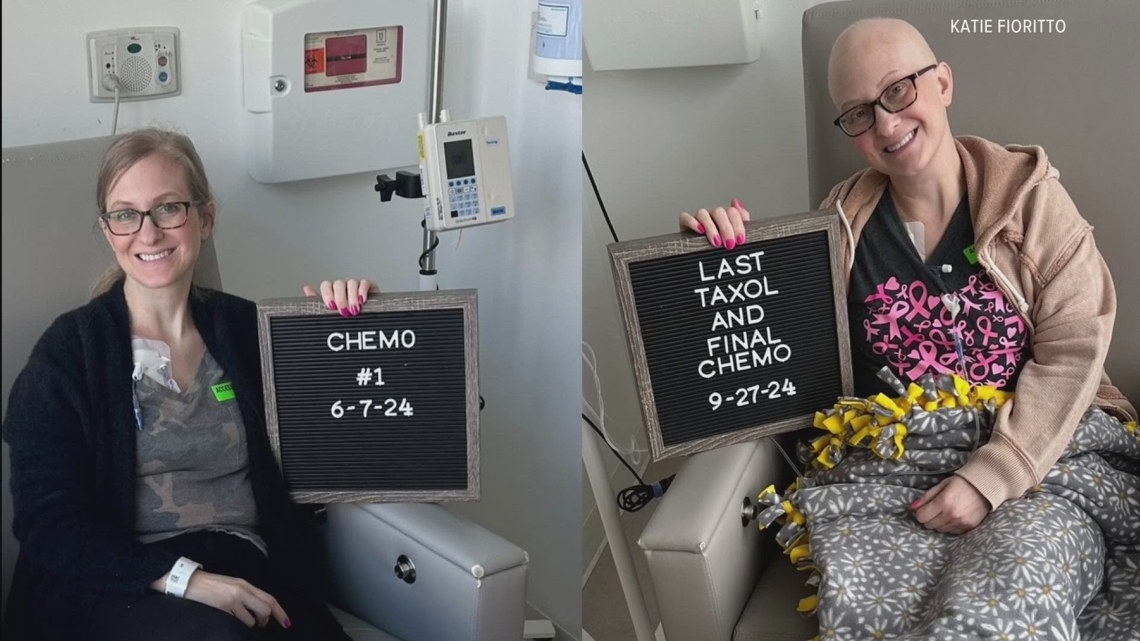Northeast Ohio Nurse Raises Awareness for Lobular Breast Cancer Through Personal Journey
—

When we discuss breast cancer, the conversation often centers around the more commonly recognized types, such as ductal carcinoma. However, there’s a less talked-about yet significant player in the world of breast cancer—Invasive Lobular Carcinoma (ILC), which accounts for about 15% of all breast cancer cases. Despite its prevalence, targeted therapies specifically for lobular breast cancer are still lacking, which makes awareness and early detection all the more critical.
### October 15: A Day for Lobular Breast Cancer Awareness
Today marks Lobular Breast Cancer Awareness Day, an opportunity to spotlight the challenges of diagnosing and treating this unique form of breast cancer. One poignant story comes from Cleveland, where 37-year-old Katie Fioritto has just embarked on her radiation treatment journey after undergoing a double mastectomy and chemotherapy. She is the youngest of seven siblings, and yet, she is the fourth member of her family to be diagnosed with breast cancer.
Katie shares that her mother had lobular breast cancer in her seventies, while her two sisters faced the more common ductal type. “In our family, breast cancer seems to run in different forms,” Katie remarks. Despite being a nurse and knowing the risks she faced, she never anticipated that a breast cancer diagnosis would come her way at such a young age.
### The Importance of Early Detection
Katie credits her family’s experiences with breast cancer for helping her catch her diagnosis early enough to take action. “Without them, I probably wouldn’t have sought high-risk screenings or been diligent about performing self-exams,” she admits. This sobering sentiment underscores the necessity of awareness and vigilance, particularly in families with a history of breast cancer.
Acting as her own health advocate, Katie began her education on lobular breast cancer through resources like lobularbreastcancer.org, a site created by the Lobular Breast Cancer Alliance, which comprises patient advocates, clinicians, and researchers. Helpful guidance from experts, such as Dr. Megan Kruse at the Cleveland Clinic, has also been essential in navigating her treatment journey.
Dr. Kruse provides insight into why lobular breast cancer is often tricky to detect. “This type of cancer can manifest in a more insidious manner, sometimes showing up as single lines of cancer cells that form within the breast tissue. Instead of a solid mass, it can resemble a spider web or ivy growing through the tissue,” she explains. This unique growth pattern complicates the detection process, making it crucial for women, especially those who are at higher risk, to utilize advanced screenings like MRIs instead of just traditional mammograms.
### A Familial Connection but No Clear Genetic Link
Katie’s family history might suggest a genetic link to her diagnosis, yet comprehensive genetic testing did not reveal any abnormalities. Dr. Kruse reassures that just because no known genetic markers were identified doesn’t mean that there isn’t a hereditary risk. “Sometimes, we simply don’t have the scientific understanding yet of the genetic factors at play,” she notes, further emphasizing the need for continuous research in this area.
Katie encourages all women to educate themselves about different types of breast cancer and to take the steps necessary for proactive health care. “You only have one body, and you must take care of it. Understanding how your body works and the specific risks you face is invaluable,” she urges.
### Understanding Invasive Lobular Carcinoma
According to the Lobular Breast Cancer Alliance, invasive lobular carcinoma is not only common but also the sixth most frequently diagnosed cancer among women in the U.S., with over 46,000 new cases identified each year. Despite its frequency, the medical community only began recognizing ILC as a distinct subtype of breast cancer in 2015, highlighting how much we still have to learn.
One of the most distinguishing features of ILC tumors is their absence of the protein E-cadherin, which typically helps cells to stick together. This characteristic means that ILC tumors often do not form a palpable lump, making them harder to detect during self-exams or routine screenings. Women should be aware of any changes in their breasts and consult their healthcare providers if they notice anything unusual.
As we acknowledge Lobular Breast Cancer Awareness Day, let’s keep the conversation about this under-discussed cancer alive. By sharing stories like Katie’s and educating ourselves about ILC, we can drive greater awareness, encourage early detection, and ultimately support those fighting this challenging disease. For more information on the signs and symptoms of ILC, visit Lobular Breast Cancer Alliance.





